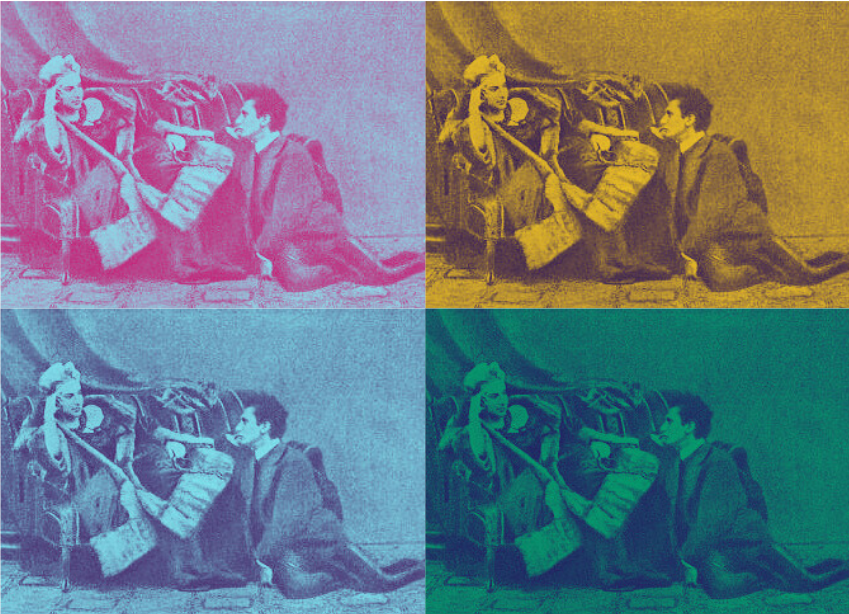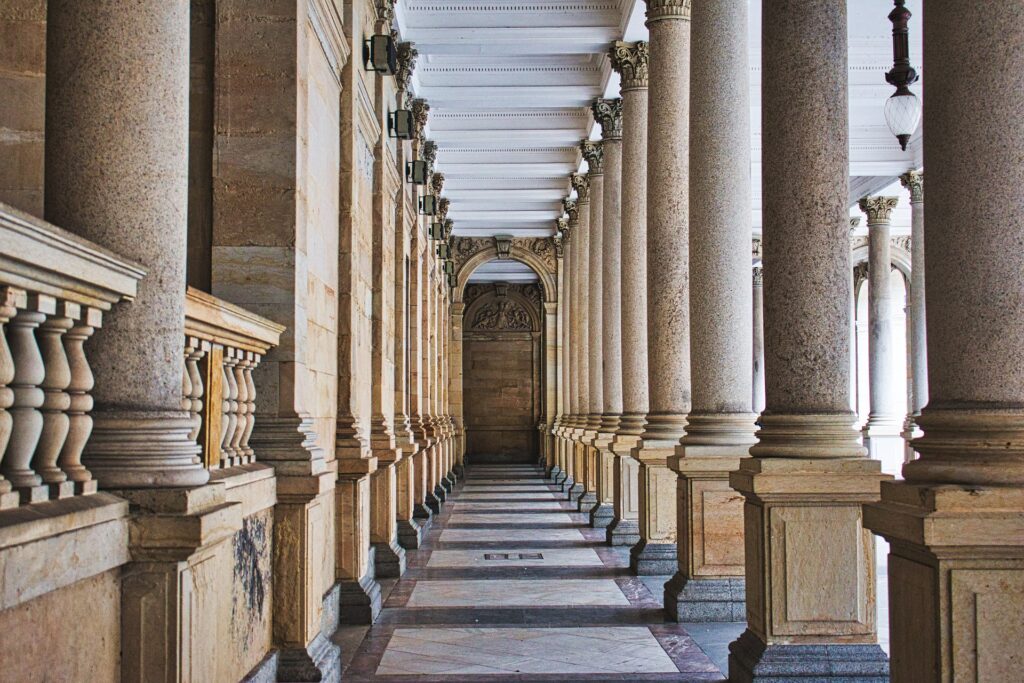

During the 19th century Karlovy Vary and other Czech spa towns drew visitors from all over Europe. Franz Kafka, Mark Twain, Karl Marx, Johann Wolfgang von Goethe and Emperor Franz Joseph, they all visited Bohemia’s “Spa Triangle”. Today, while you have to reserve actual spa treatments well in advance, you can walk in the footsteps of a 19th century Karlovy Vary “convalescent” by taking the waters. Spa guests were prescribed drinking certain numbers of glasses of water per day…
Anyone who was anyone in the 19th century had to visit Bohemia’s Spa Triangle, including Goethe, King Edward VII, and countless other artists, politicians, and industrialists. Even Karl Marx, communist thinker, dipped his cup in the luxurious surroundings of Karlovy Vary.
Bohemia’s spa towns drew visitors from all over Europe. They ranged from British royalty to Polish Orthodox Jews. Even the staff were cosmopolitan, drawn from all over the Habsburg Empire. Jewish people were crucial to the rise of Bohemia’s spas as most of the doctors that elevated them from vacation spots to kurortes, or true health resorts, were Jewish.
The rich and famous didn’t just come to play, but often used the spa towns to decide the course of politics on the continent. Being the site of important political events wasn’t always great. After the Carlsbad Resolutions (1819) which limited liberal rights such as freedom of speech and protest, Karlovy Vary town fathers complained about the bad press the town received among European liberals.
One is caught up in a kind of machinery the whole day through, which hardly leaves with a spare moment.
Karl Marx on the routine of drinking water in Karlovy Vary
Karlovy Vary’s reputation recovered soon and by the end of the 19th century, it was one of Europe’s poshest spas. The wealthiest guests built their own mansions around Postovni Bridge. Others preferred to stay in the ultra-fashionable Grand Hotel Pupp (1894).
While you have to reserve actual spa treatments well in advance, you can walk in the footsteps of a 19th century Karlovy Vary “convalescent” by taking the waters. Spa guests were prescribed drinking certain numbers of glasses of water per day. The routine was so regimented that in a letter to Engels, Marx said, “one is caught up in a kind of machinery the whole day through, which hardly leaves with a spare moment.”

You don’t have to drink several glasses a day, but be sure to stroll along the elegant Hot Spring Colonnade, built so spa guests could visit the healing springs and take walks without getting wet on rainy days. For the full experience, follow up your drink of mineral-rich water with an “oplatky,” thin, delicate wafers only made in these spa towns.
Karlovy Vary and its fellow spas were also regional centers of culture and entertainment. The first film projection in the modern-day Czech Republic didn’t happen in Prague, but in Marianske Lazne and Karlovy Vary. The cinematic legacy continues as every summer, Karlovy Vary is home to the Karlovy Vary Film Festival (founded in 1948).
Karlovy Vary may be more famous, but many spa lovers say the real jewel is its smaller neighbor, Marianske Lazne (Marienbad). It was even the favorite of Franz Kafka, who said, “Karlsbad is rather pleasant, but Marienbad is unbelievably beautiful,” in a letter to his ill-fated love, Felice.
Marianske Lazne is younger than Karlovy Vary and only became a popular spa in the early 19th century, when enterprising local abbott Karel Kaspar Reitenberger worked on developing the town’s natural spring.
The town preserved much of its 19th century architecture, like the neo-Baroque main Colonnade (which some visitors claim is ruined by the kitschy Singing Fountain in front). Many visitors in the 19th century preferred it to Karlovy Vary since it was more peaceful..
The aging writer Johann Wolfgang von Goethe seemed to agree, and he switched his prodigious spa-going habits to Marianske Lazne as a concession to his old age. However, in 1823, 74-year-old Goethe forgot that he was elderly when he fell in love with another spa guest, 19-year-old Ulrike von Levetzow. Ulrike decidedly rejected Goethe, even though his noble friends put pressure on her to accept, but Goethe’s last heartbreak yielded a beautiful poem, “the Marienbad Elegy.” Literary-minded visitors can still walk on Goethe’s Trail, where Goethe hounded his ill-fated lover.
This is an excerpt from our new guidebook Habsburg Empire. You get the book here in our shop.
Start your journey in the Extinguished Countries!
Get a free chapter from our first guidebook “Republic of Venice” and join our community!